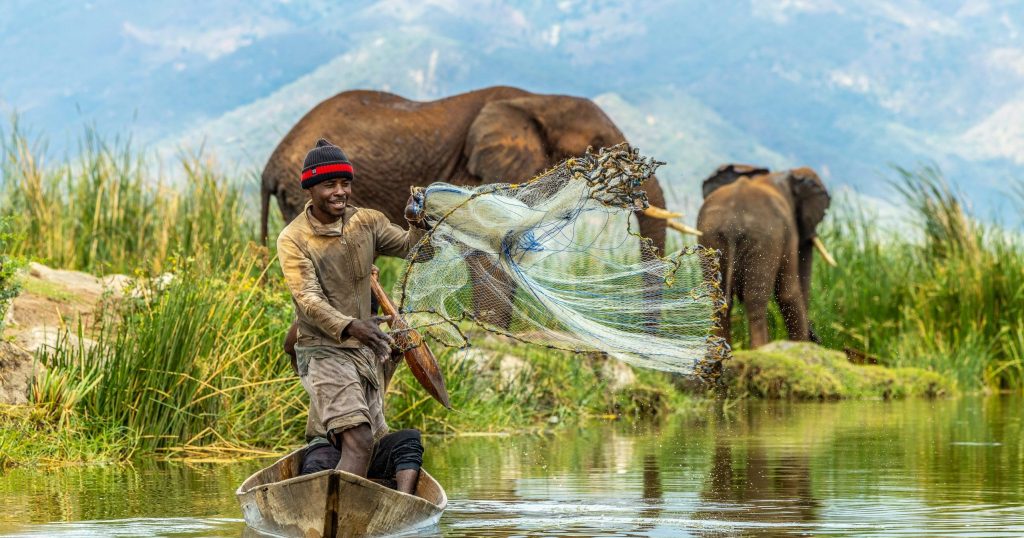
Fishermen in Lake Jipe share the lake with wild elephants in a unique example of coexistence © Anthony Ochieng/Save the Elephants
On the edge of Kenya’s vast Tsavo West National Park lies Lake Jipe – one of the country’s most important wetlands and home to hippos, crocodiles and unique birdlife. But beyond its tranquil setting, this freshwater lake also holds a remarkable secret—a harmonious and unique coexistence between humans and elephants. At the center of this tale is Manolo, a wise bull elephant, and his band of equally legendary companions.
Save the Elephants (STE) researchers were the first to uncover the extraordinary bond shared between Manolo (aged 40) and the fishing community of Mikocheni living near Lake Jipe. GPS tracking data from his collar put on in 2018 indicated that he was spending an unusually large amount of time in the lake. Curiosity piqued, the researchers embarked on a journey to investigate. What they discovered was a testament to the inherent connection between humans and nature and the fascinating world of elephant behaviour.
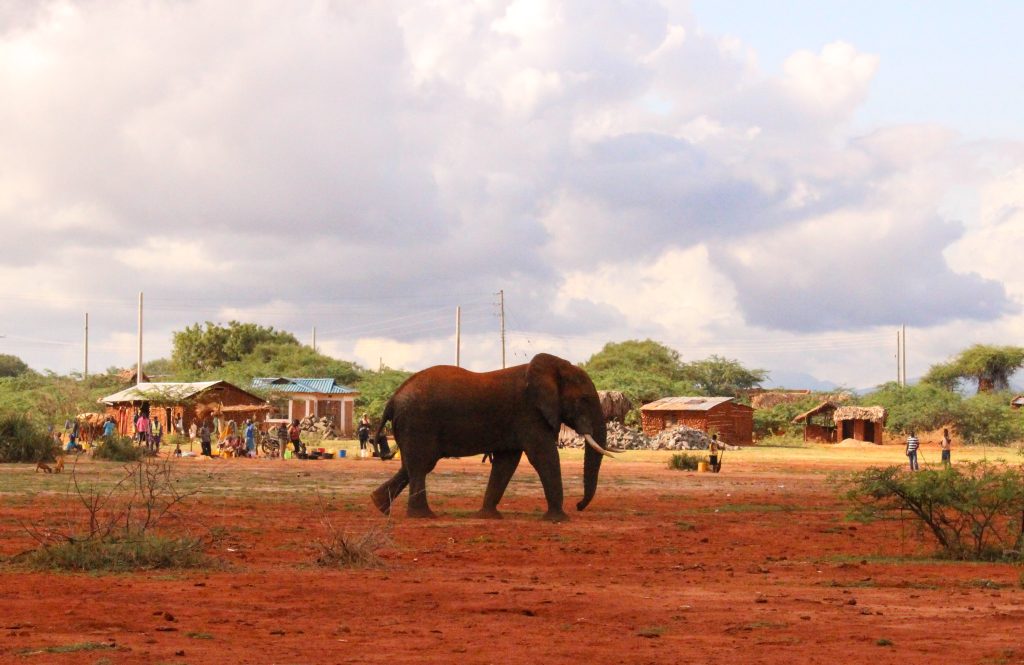
STE researchers were first to uncover the extraordinary bond shared between Manolo (pictured) and the local community © Ewan Brennan/Save the Elephants
Manolo and his companions had found a special route through a local fishing village, granted safe passage by the community itself. They traversed the village every day, walking amidst small groups of children, boda boda (courier bike) riders, and women selling fish. This daily ritual was a testament to the mutual respect and tolerance that had been nurtured over time.
Intrigued by this extraordinary relationship, further research was conducted by Save the Elephants in 2020 to gauge the locals’ attitudes towards the elephants. STE’s study showed that the residents of Mikocheni appeared to be living in a state of ‘passive coexistence’ with these mighty pachyderms. Most remarkable was that although the elephants occasionally disrupted their fishing activities, the community had never resorted to killing them in retaliation.
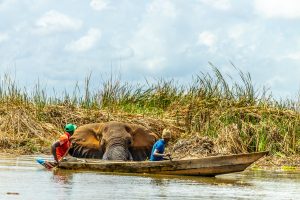
Local fishermen from Mikocheni row past an elephant cooling off in the background. © Anthony Ochieng/Save the Elephants
After reading this study, I was eager to learn more about the factors that were driving the elephants to the lake in the first place. My focus was on understanding the nutritional drivers, seasonal changes in vegetation, and the availability of forage—essential elements that shaped the elephants’ behaviour. In 2022, I traveled to Lake Jipe with a team from Save the Elephants.
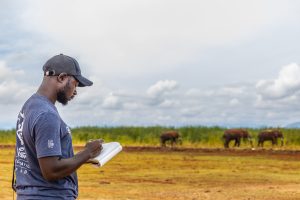
STE researcher, Zachary Mutinda, has been studying the elephants at Lake Jipe © Anthony Ochieng/Save the Elephants
Recognising the crucial role the community played in this intricate tapestry, we decided to actively involve the locals in our quest for knowledge. An Environmental Education Programme was initiated at Jipe Primary School, fostering a deep and meaningful relationship with the community. This collaborative approach sought to shed light on the detailed dynamics between humans and elephants.
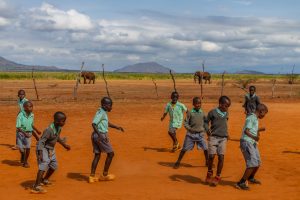
The community of Lake Jipe, such as these children at Jipe Primary school, interact with elephants on a daily basis © Anthony Ochieng/Save the Elephants
During my time at Lake Jipe, I had the privilege of witnessing the profound connection between the locals and the elephants first hand. Generations of community members had grown up accustomed to the elephants’ presence and had developed an understanding of their behaviour and habits. One community member even welcomed me saying “Karibu Jipe ambapo tunaishi na ndovu” (Welcome to Jipe where we live with elephants)!
Working with a research assistant, Alphonse Maira, from Kachero village, I observed elephants and people interacting with each other every day – on the lake shore, inside the lake and near their homes – like the way pastoralists interact with their cattle. One community member described the elephants as ‘brothers’ … “They are our brothers, we know their timing, we know their behaviours and we live in harmony despite the threats to our livelihoods.”
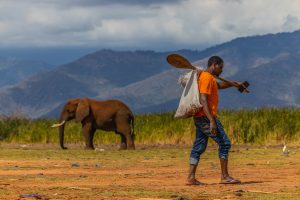
The Jipe community remains committed to keeping peace with the elephants © Anthony Ochieng/Save the Elephants
However, the situation at Lake Jipe is not without challenges. The area, which is an important dry season refuge for elephants, has undergone severe ecological degradation over the years. Poverty is driving children into fishing and the lack of sustainable alternative livelihoods has pushed the community to fishery overexploitation and illegal charcoal and wood sales. Lake Jipe needs intervention, awareness and restoration programmes to protect and restore its ecological balance.
Nevertheless, the Jipe community remains steadfast in its commitment to cultivating peaceful interactions with the elephants. They recognise the elephants’ significance and refuse to let them disappear. Fishermen boast of the elephants’ swimming prowess in their search for bullrush roots and take pride in sharing the waters with these wonderful creatures. Collaborating with Save the Elephants, the community is actively engaged in developing alternative livelihoods and solutions to prevent any potential escalation in conflicts.
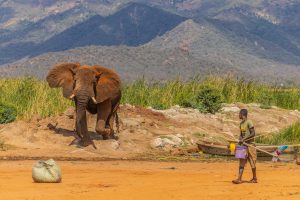
The Lake Jipe community remains committed to living in harmony with elephants © Anthony Ochieng/Save the Elephants
As the story unfolds, I look forward to sharing the results of my study in due course. For now, Lake Jipe stands as a testament to the fact humans and elephants can coexist. It is a beacon of hope, urging us to strive for a future where such coexistence flourishes.
Read more about Save the Elephants’ Lake Jipe 2020 study here.

